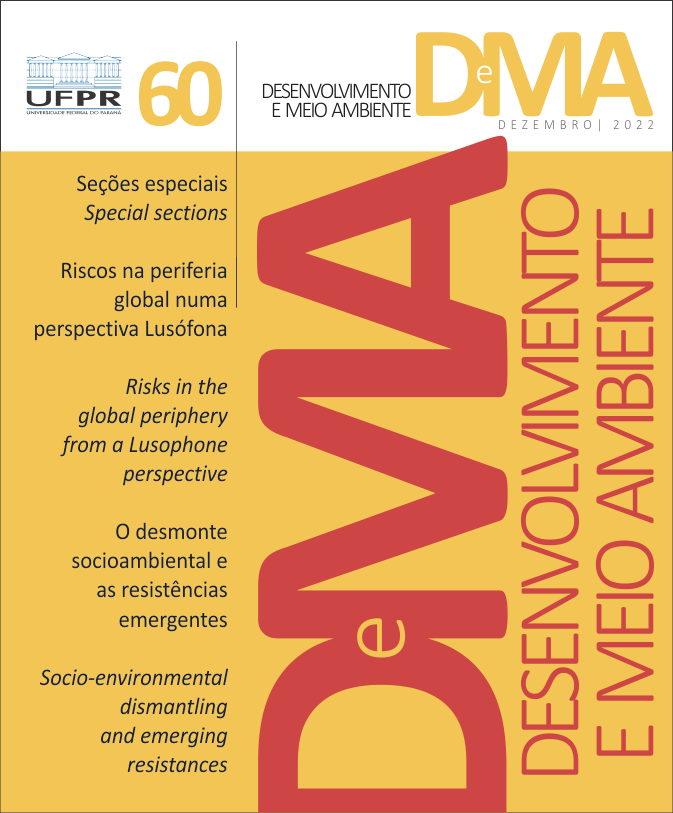Representações sociais sobre ‘ser atingido’ por rejeitos de minério: um estudo sobre os afetados pela barragem de Fundão
DOI:
https://doi.org/10.5380/dma.v60i0.76467Palavras-chave:
atingidos, mineração, representações sociais, complexidadeResumo
A indústria mineral revela-se de extrema importância para a estabilidade do padrão de vida humano contemporâneo, segundo o discurso dominante. Porém, nos últimos anos ocorreram desastres que mostram os limites da atividade extrativista minerária. O rompimento da barragem de Fundão, em Mariana-MG (2015), impactou a natureza e afetou milhares de famílias que dependiam, direta ou indiretamente, das águas do Rio Doce que foram enlameadas com rejeitos de minério. Nessa pesquisa, buscou-se identificar e interpretar as representações sociais que foram elaboradas sobre o sentido de ‘ser atingido’. Orientado por uma perspectiva interdisciplinar, articulou-se o enfoque da Complexidade ao da Teoria das Representações Sociais. Para o levantamento dos dados realizou-se 1) análise documental do jornal A Sirene (elaborado pelos atingidos) e atas das reuniões do Comitê Interfederativo (CIF), entre os anos de 2016-2018; 2) entrevistas com pessoas atingidas e com membros do CIF; 3) observação participante e conversas informais durante as idas a campo. Os resultados mostram que as representações sociais sobre ser ‘atingido’ vinculam-se a elementos diversos, de ordem material e imaterial. Conclui-se que a normatização técnica e jurídica da categoria de atingido da mineração pode ser limitadora e excludente, não promovendo a justiça, pois numa realidade complexa as afetações de um acontecimento de grandes dimensões são múltiplas.
Downloads
Publicado
Como Citar
Edição
Seção
Licença
Os Direitos Autorais sobre trabalhos publicados nesta revista são do autor, com direitos de primeira publicação para a revista. O conteúdo dos trabalhos publicados é de inteira responsabilidade dos autores. A DMA é um periódico de acesso aberto (open access), e adota a licença Creative Commons Atribuição 4.0 Não Adaptada (CC-BY), desde janeiro de 2023. Portanto, ao serem publicados por esta Revista, os artigos são de livre uso para compartilhar (copiar e redistribuir o material em qualquer suporte ou formato para qualquer fim, mesmo que comercial) e adaptar (remixar, transformar, e criar a partir do material para qualquer fim, mesmo que comercial). É preciso dar o crédito apropriado, prover um link para a licença e indicar se mudanças foram feitas.
Os conteúdos publicados pela DMA do v. 53 de 2020 ao v. 60 de 2022 são protegidos pela licença Creative Commons Atribuição – Não Comercial – Sem Derivações 4.0 Internacional.
A DMA é uma revista de acesso aberto desde a sua criação, entretanto, do v.1 de 2000 ao v. 52 de 2019, o periódico não adotava uma licença Creative Commons e, portanto, o tipo de licença não é indicado na página inicial dos artigos.




